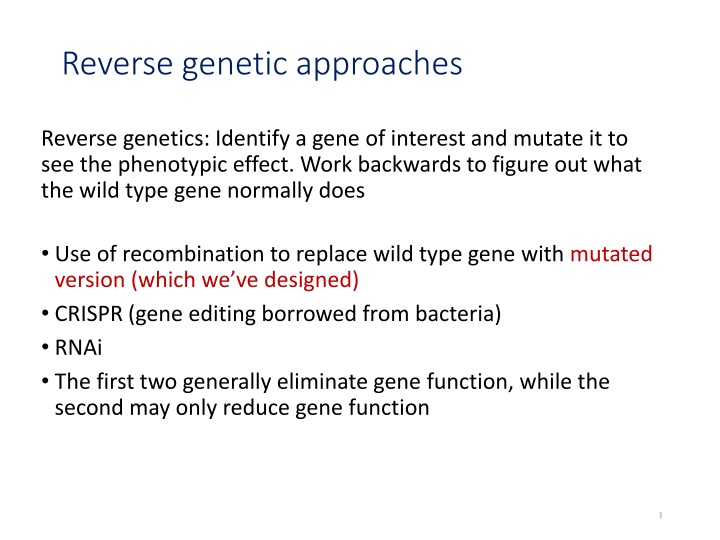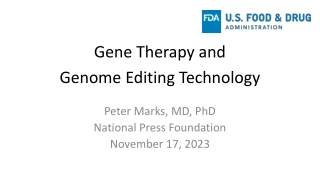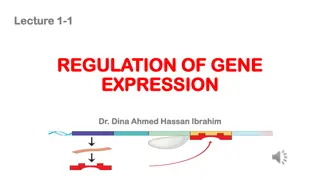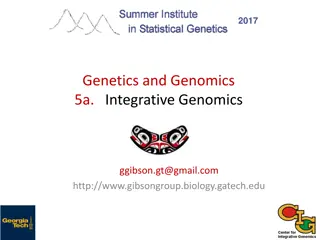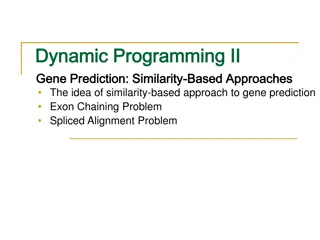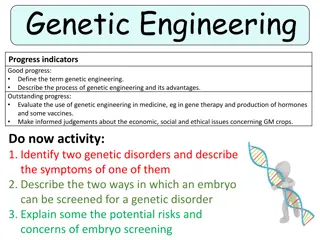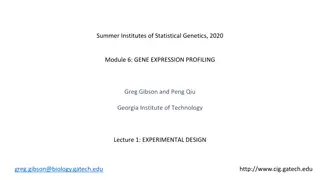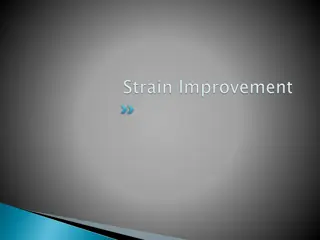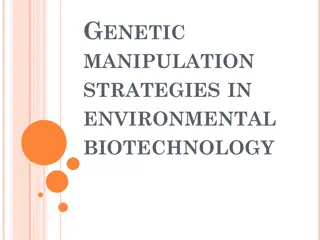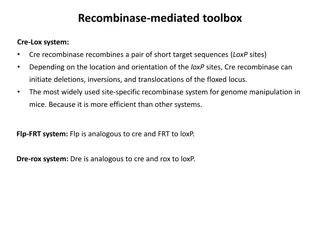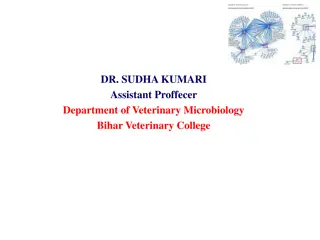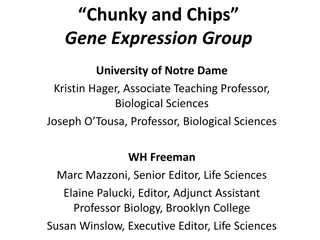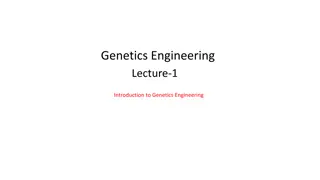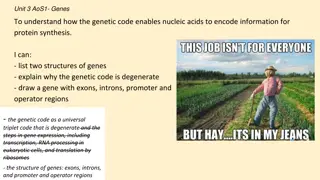Reverse Genetic Approaches in Gene Manipulation
Reverse genetic approaches involve mutating a target gene to observe its phenotypic effects, providing insights into the gene's normal function. Techniques like gene knockout, knockdown, and homologous recombination are used to manipulate genes and study genetic pathways, leading to discoveries in various fields such as cancer, obesity, and aging.
Download Presentation

Please find below an Image/Link to download the presentation.
The content on the website is provided AS IS for your information and personal use only. It may not be sold, licensed, or shared on other websites without obtaining consent from the author.If you encounter any issues during the download, it is possible that the publisher has removed the file from their server.
You are allowed to download the files provided on this website for personal or commercial use, subject to the condition that they are used lawfully. All files are the property of their respective owners.
The content on the website is provided AS IS for your information and personal use only. It may not be sold, licensed, or shared on other websites without obtaining consent from the author.
E N D
Presentation Transcript
Reverse genetic approaches Reverse genetics: Identify a gene of interest and mutate it to see the phenotypic effect. Work backwards to figure out what the wild type gene normally does Use of recombination to replace wild type gene with mutated version (which we ve designed) CRISPR (gene editing borrowed from bacteria) RNAi The first two generally eliminate gene function, while the second may only reduce gene function 1
Gene knock-out plasmids (eliminate function) 1. Insertional mutagenesis 2. DNA-mediated homologous recombination with target gene 3. CRISPR/CAS for RNA-mediated disruption of target gene (not only used for gene knock-out) Gene knock-down plasmids (RNA silencing) (reduce function) 4. Expression of double-stranded RNA to generate RNA interference 2
2. Knock- out by homologous recombination Plasmid harboring a mutated version of target gene, usually by insertion of antibiotic resistance gene or reporter gene Introduction of large number of plasmids into cells result in recombination with target locus in a few cells/nuclei. Those cells are selected for by addition of antibiotic, killing cells that don t have resistance gene in their genome Works in many prokaryotes, yeast, mouse, flies, but not in plants, human cells 3
Antibiotic resistance or marker gene Target gene Target gene Antibiotic resistance or marker gene 4
Example: knockout line of the gene encoding the bone- morphogenetic protein 7 (BMP7) in mouse wild type knock-out wild type knock-out from Gilberts, Developmental Biology 5
Homologous recombination has generated mice mutants and Homologous recombination has generated mice mutants and phenotypes that provided insights into genetics of MANY phenotypes that provided insights into genetics of MANY human diseases human diseases Examples: Cancer Obesity Heart disease Diabetes Arthritis Ageing Substance abuse Anxiety Parkinson s disease Many others 6
